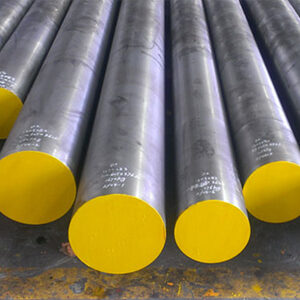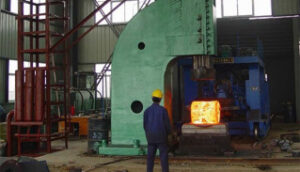Hot work tool steel tools are indispensable in industries that require high-temperature resistance and durability. These tools play a critical role in processes like forging, die casting, and extrusion. To ensure their longevity and consistent performance, proper maintenance is essential. In this extensive guide, we will explore the best practices and expert tips for maintaining hot work tool steel tools.
1. Introduction to Aço para ferramentas de trabalho a quente Tools
1.1 The Importance of Aço para ferramentas de trabalho a quente Tools
Aço para ferramentas de trabalho a quente tools are the backbone of industries that rely on high-temperature processes. These tools are used in applications where regular steel or other materials would fail due to the extreme conditions, making them essential for maintaining productivity and product quality.
1.2 The Impact of Maintenance
Proper maintenance of hot work tool steel tools is not just a matter of convenience; it significantly impacts a company’s bottom line. Effective maintenance practices can extend tool life, maintain performance standards, and reduce costly downtime.
2. Entendendo o aço ferramenta para trabalho a quente
2.1 What Is Hot Work Tool Steel?
Hot work tool steel is a specialized steel alloy designed to perform in high-temperature environments. It possesses key properties like high heat resistance, toughness, wear resistance, and dimensional stability, making it ideal for applications involving extreme heat and mechanical stress.
2.2 Key Properties of Hot Work Tool Steel
Hot work tool steel’s properties, such as heat resistance and wear resistance, are essential for its effectiveness. Understanding these properties is crucial for maintaining tools made from this material.
3. The Significance of Tool Maintenance
3.1 Prolonging Tool Life
Proper maintenance can significantly extend the life of hot work tool steel tools. This not only saves on replacement costs but also reduces the frequency of tool changes, minimizing production interruptions.
3.2 Maintaining Tool Performance
Maintaining tool performance is critical for consistent product quality. Tools that are well-maintained deliver the precision and reliability required in high-temperature applications.
3.3 Reducing Downtime
Downtime due to tool failure can be costly in terms of lost production and maintenance expenses. Effective maintenance practices can help reduce unplanned downtime and improve overall operational efficiency.
4. Best Practices for Hot Work Tool Steel Tool Maintenance
4.1 Regular Inspection
Frequent inspections allow for the early detection of issues like wear, chipping, or cracks. Regular inspections should be part of the routine maintenance schedule.
4.2 Cleaning and Lubrication
Cleaning and proper lubrication help reduce friction, prevent corrosion, and extend tool life. Choosing the right lubricants is crucial to avoid adverse chemical reactions with hot work tool steel.
4.3 Proper Storage
Tools not in use should be stored correctly to prevent damage. This includes protecting them from environmental factors like moisture and maintaining a controlled storage temperature.
4.4 Controlled Heat Treatment
When heat treatment is necessary, it should be performed according to the tool’s specifications. Controlled heat treatment ensures that the tool retains its desirable properties.
4.5 Correct Sharpening and Grinding
Sharpening and grinding should be done with precision to maintain the tool’s original geometry. Improper sharpening can lead to reduced tool life and performance.
5. Tips for Extending Tool Life
5.1 Temperature Control
Maintaining appropriate operating temperatures is essential. Excessive heat can lead to tool deterioration, while insufficient heat may reduce performance.
5.2 Minimizing Thermal Cycling
Minimizing rapid temperature fluctuations or thermal cycling can help prevent stress and cracking in hot work tool steel tools.
5.3 Adequate Cooling
Proper cooling during operations, such as die casting or forging, can prevent overheating and maintain tool integrity.
5.4 Material Compatibility
Ensure that the hot work tool steel used is compatible with the materials being processed. Incompatibility can lead to accelerated wear and tool damage.
5.5 Preventing Overloading
Avoid overloading tools beyond their specified capacity. Overloading can lead to premature failure and damage to the tool.
6. Common Tooling Issues and Troubleshooting
6.1 Wear and Erosion
Wear and erosion are common issues in hot work tool steel tools. Regular inspections can identify signs of wear, and appropriate maintenance can address these issues.
6.2 Tool Chipping and Cracking
Chipping and cracking can occur due to excessive stress or improper usage. Troubleshooting should involve identifying the root cause and implementing corrective measures.
6.3 Deformation and Distortion
Deformation and distortion can affect the dimensional accuracy of tools. Proper heat treatment and controlled cooling can help mitigate these issues.
7. FAQ: Addressing Common Questions
7.1 How often should hot work tool steel tools be inspected?
Regular inspections are recommended, with the frequency depending on usage. In high-demand industries, monthly inspections may be necessary, while less demanding applications may require inspections every few months.
7.2 Can damaged tooling be repaired, or is replacement necessary?
In some cases, damaged tooling can be repaired through processes like welding or reconditioning. However, severe damage may necessitate tool replacement for safety and performance reasons.
7.3 What lubricants are suitable for hot work tool steel tools?
Lubricants should be chosen based on their compatibility with hot work tool steel and the specific application. Synthetic or high-temperature lubricants are often recommended.
7.4 Are there specific storage conditions for hot work tool steel tools?
Hot work tool steel tools should be stored in a clean, dry environment with controlled temperature and humidity levels. They should be protected from exposure to moisture and corrosive substances.
7.5 How can I prevent tool overheating during operation?
Proper cooling systems, temperature monitoring, and adherence to recommended operating parameters can prevent tool overheating during operation. Regular inspections can also detect issues related to overheating.

